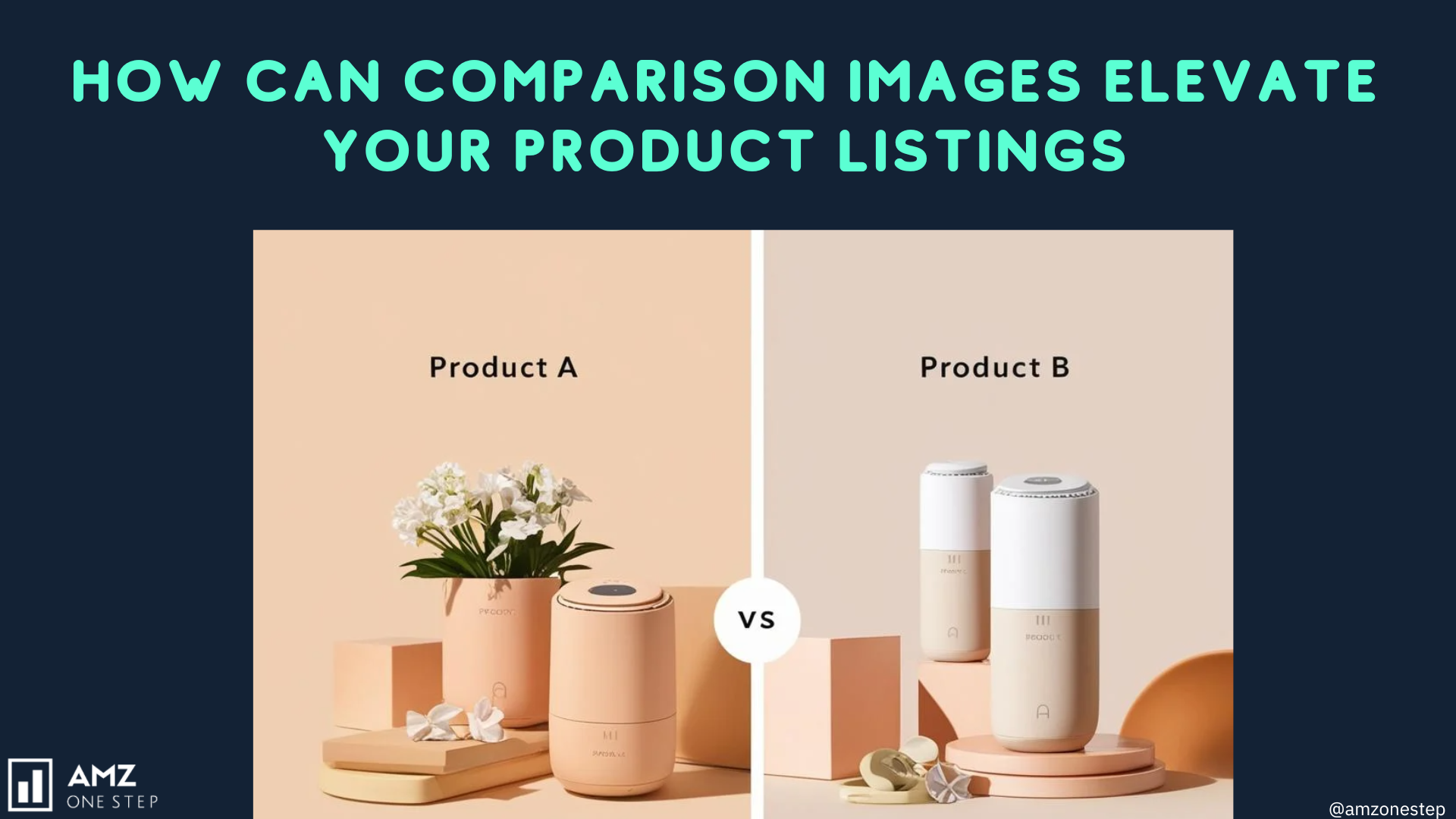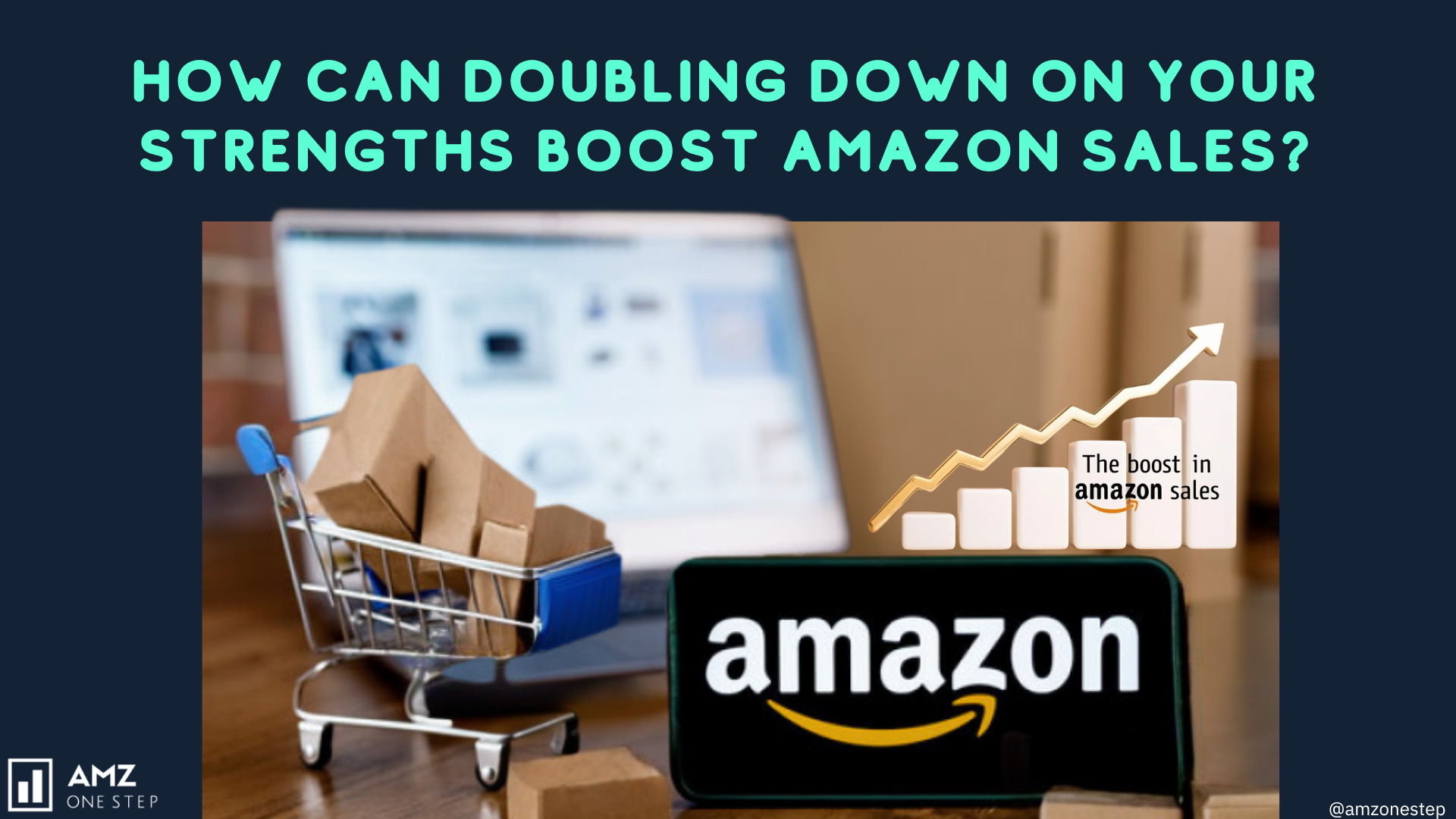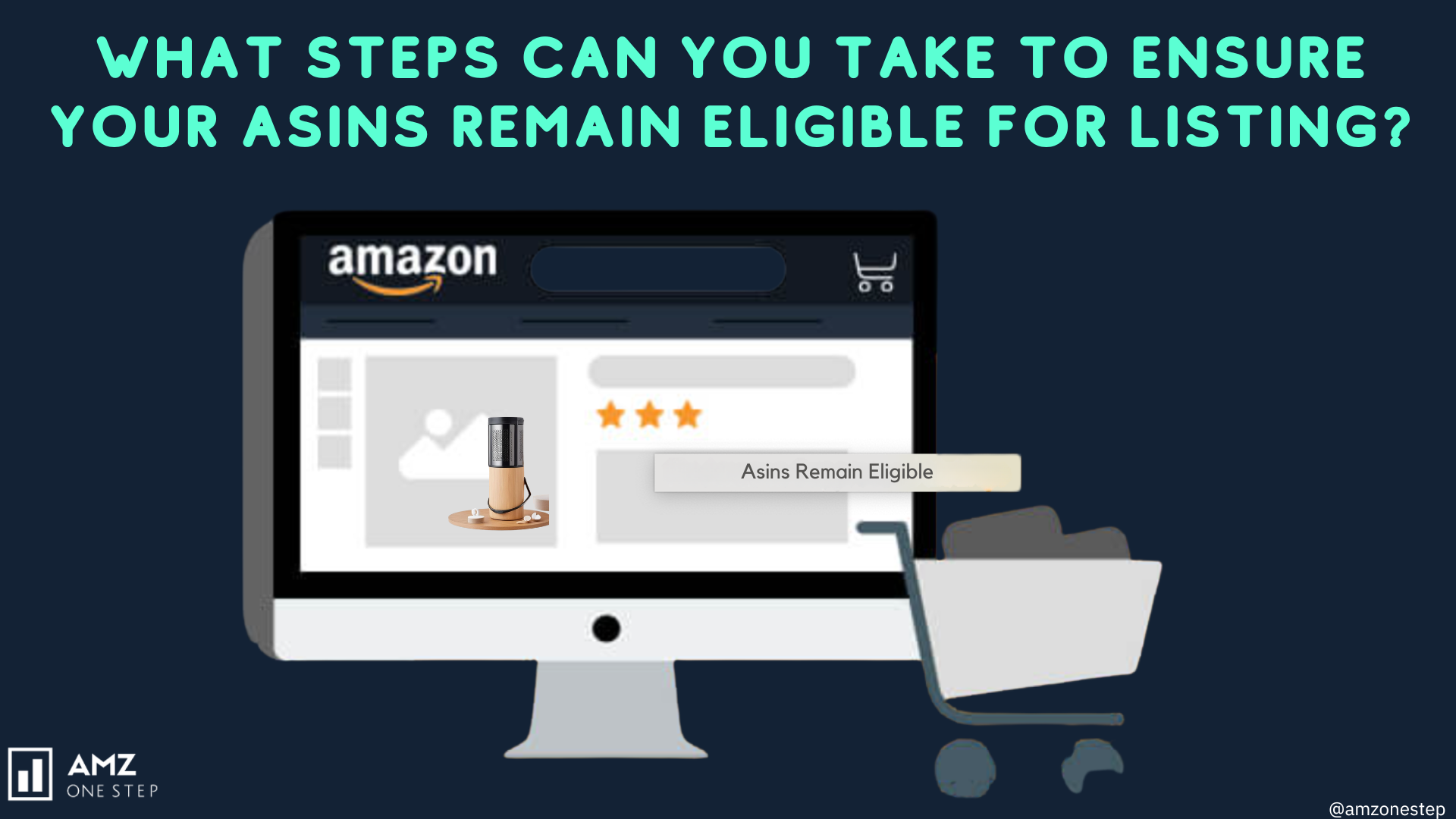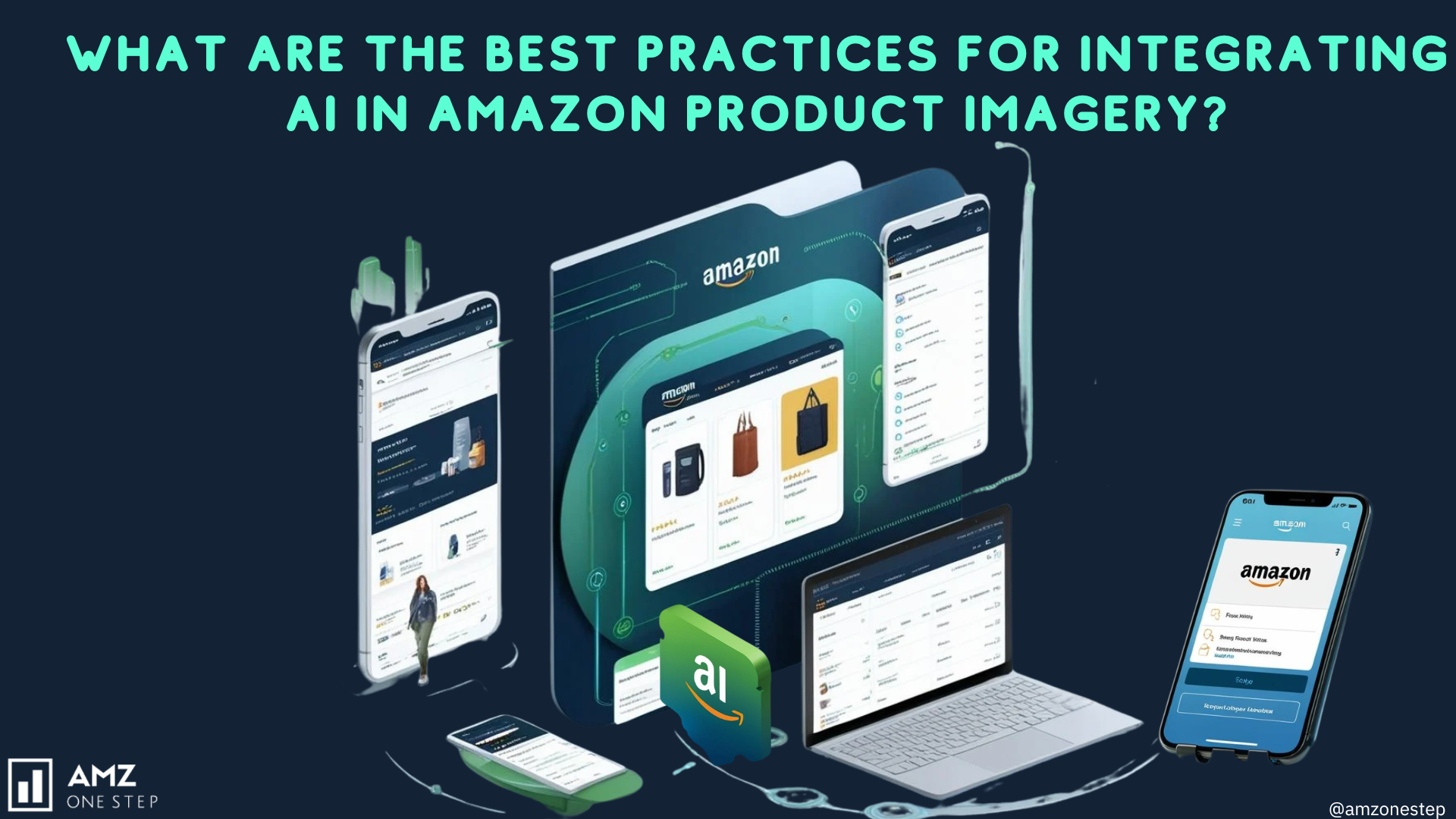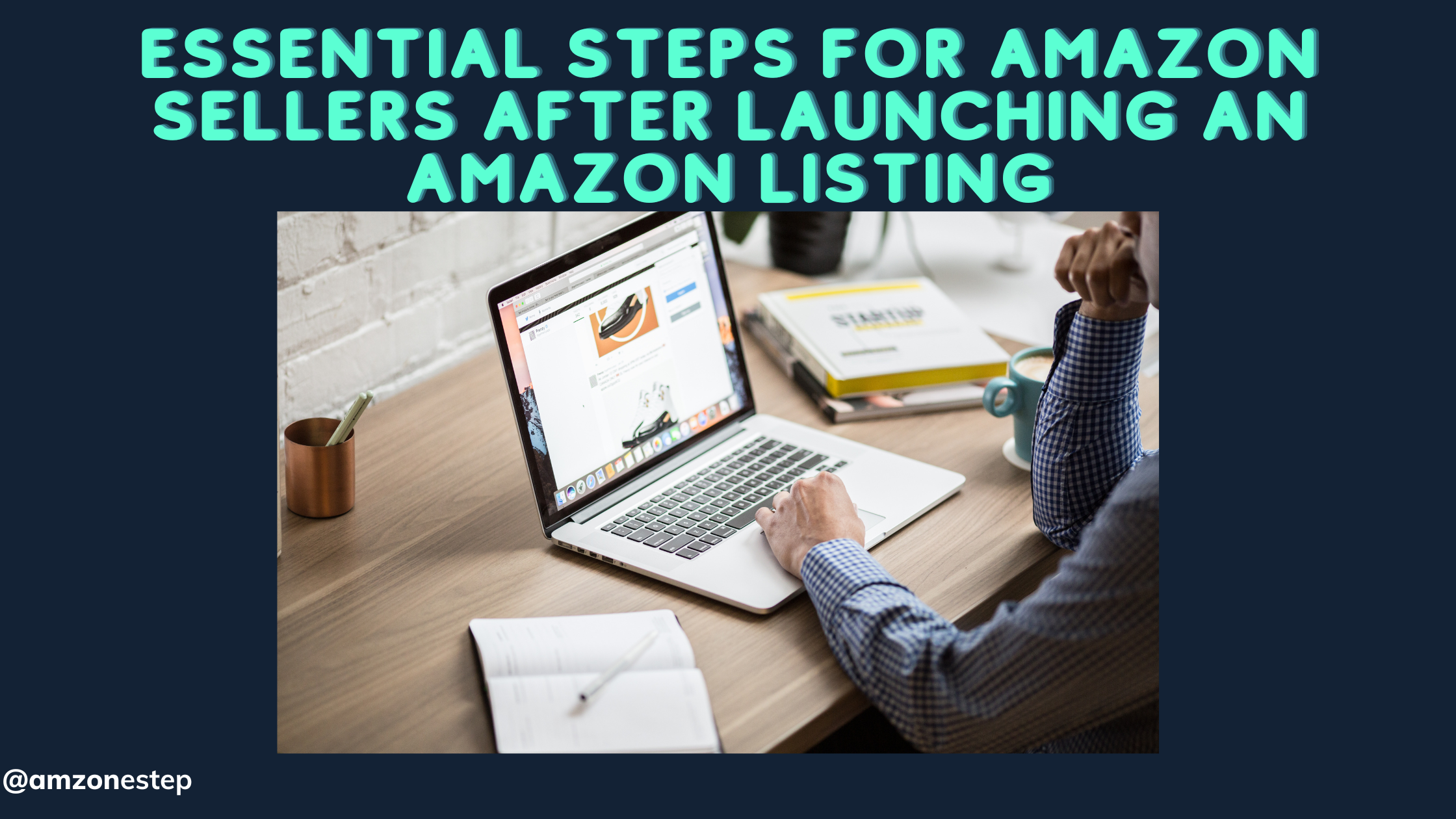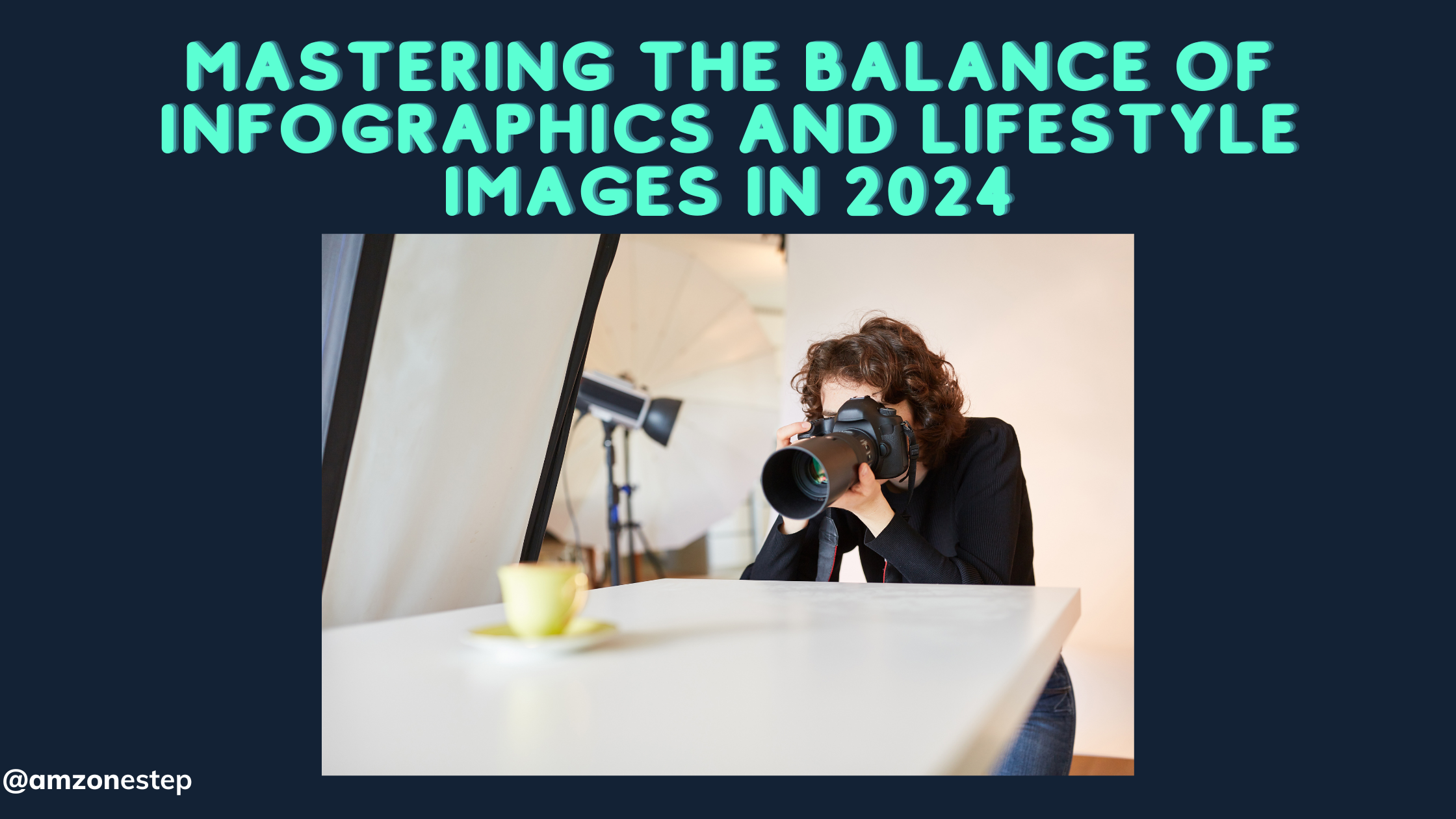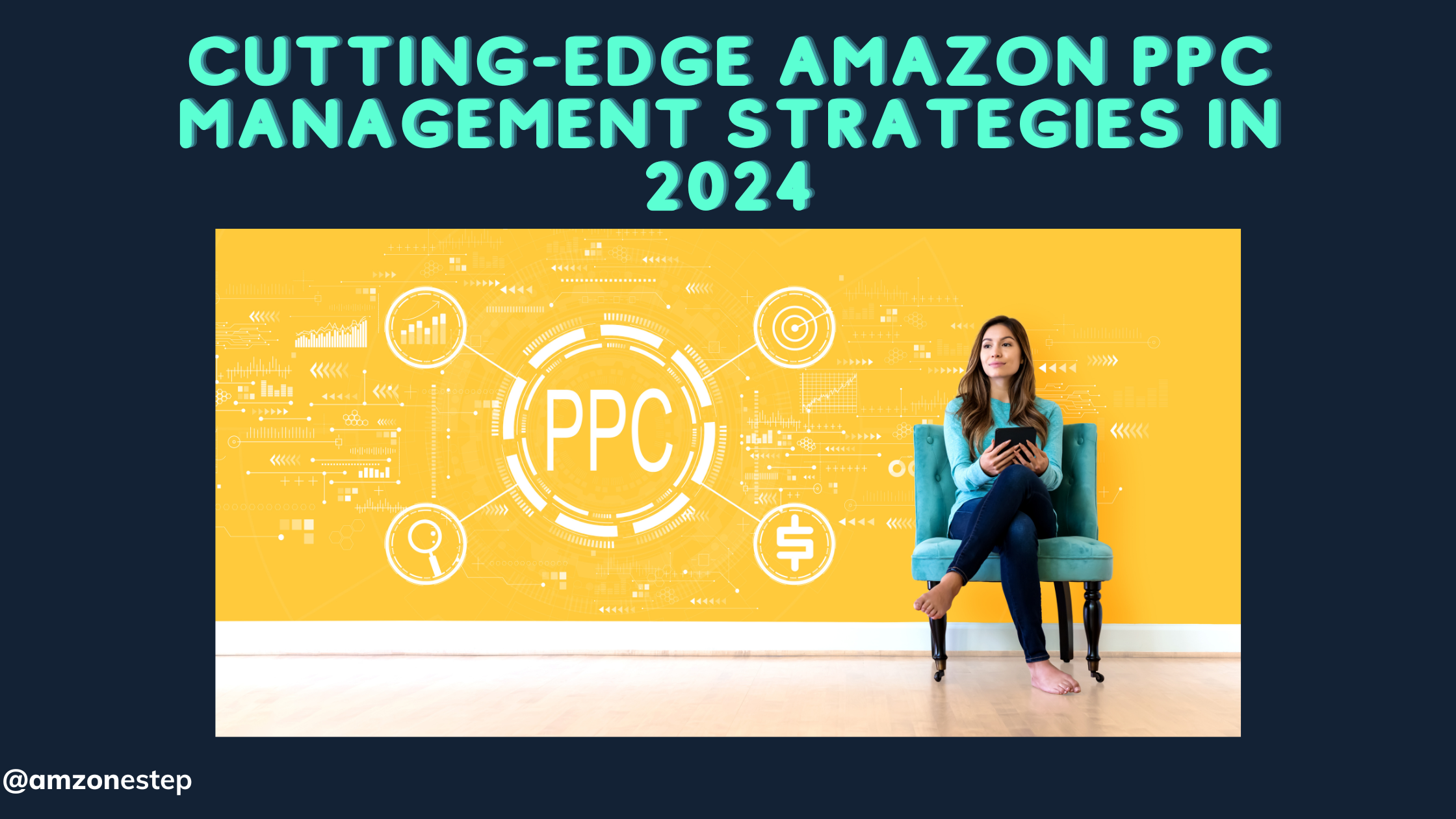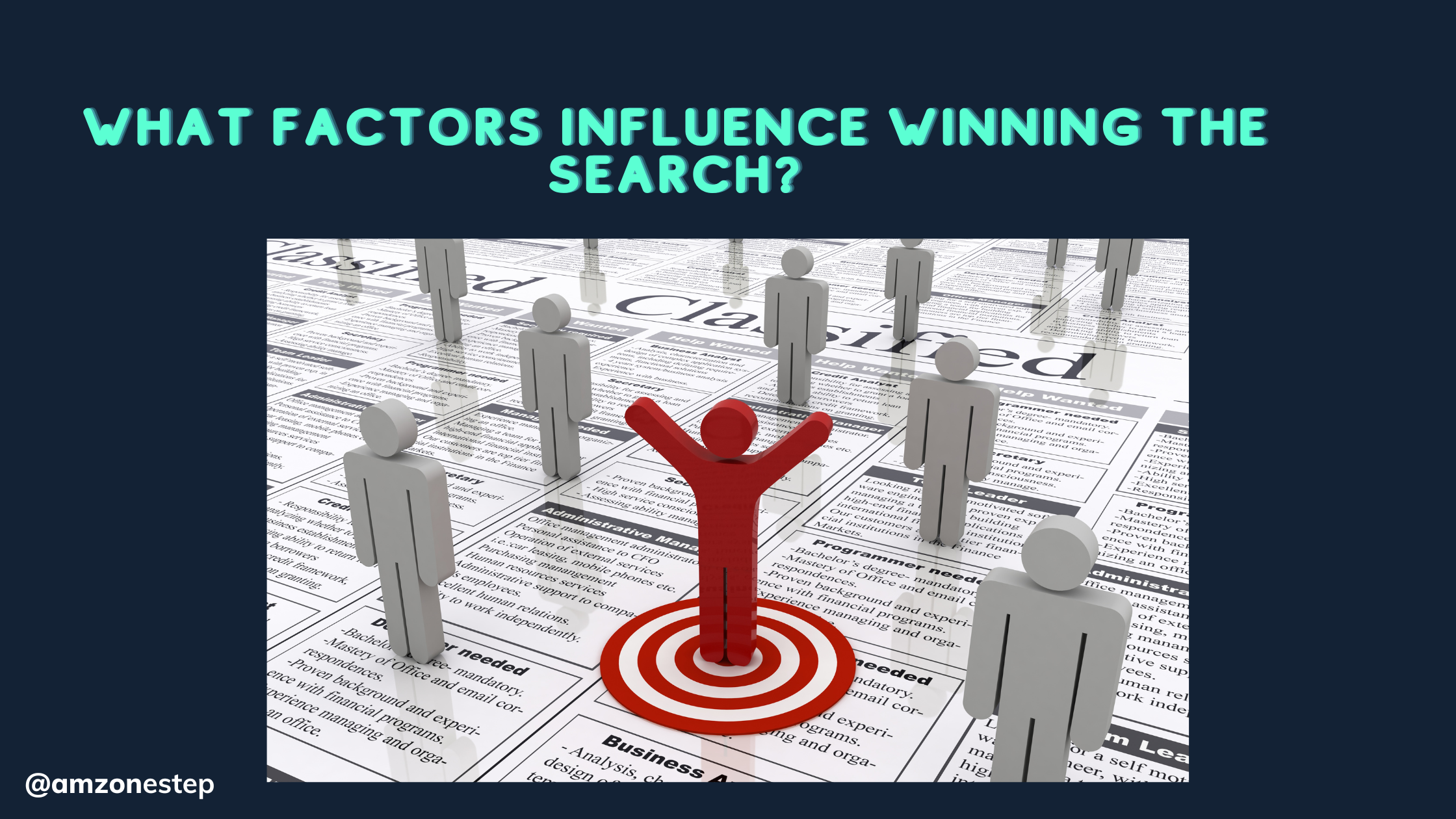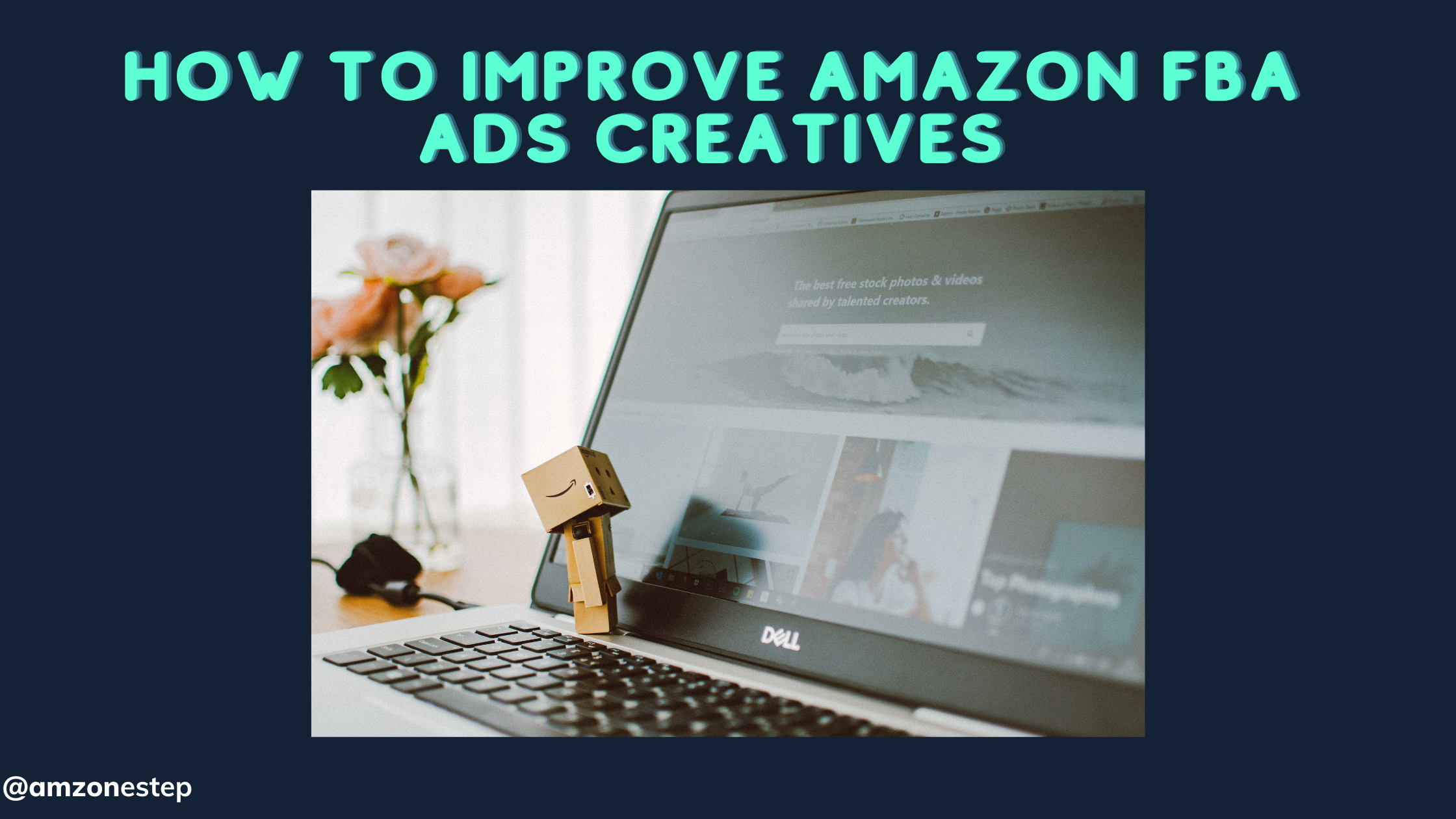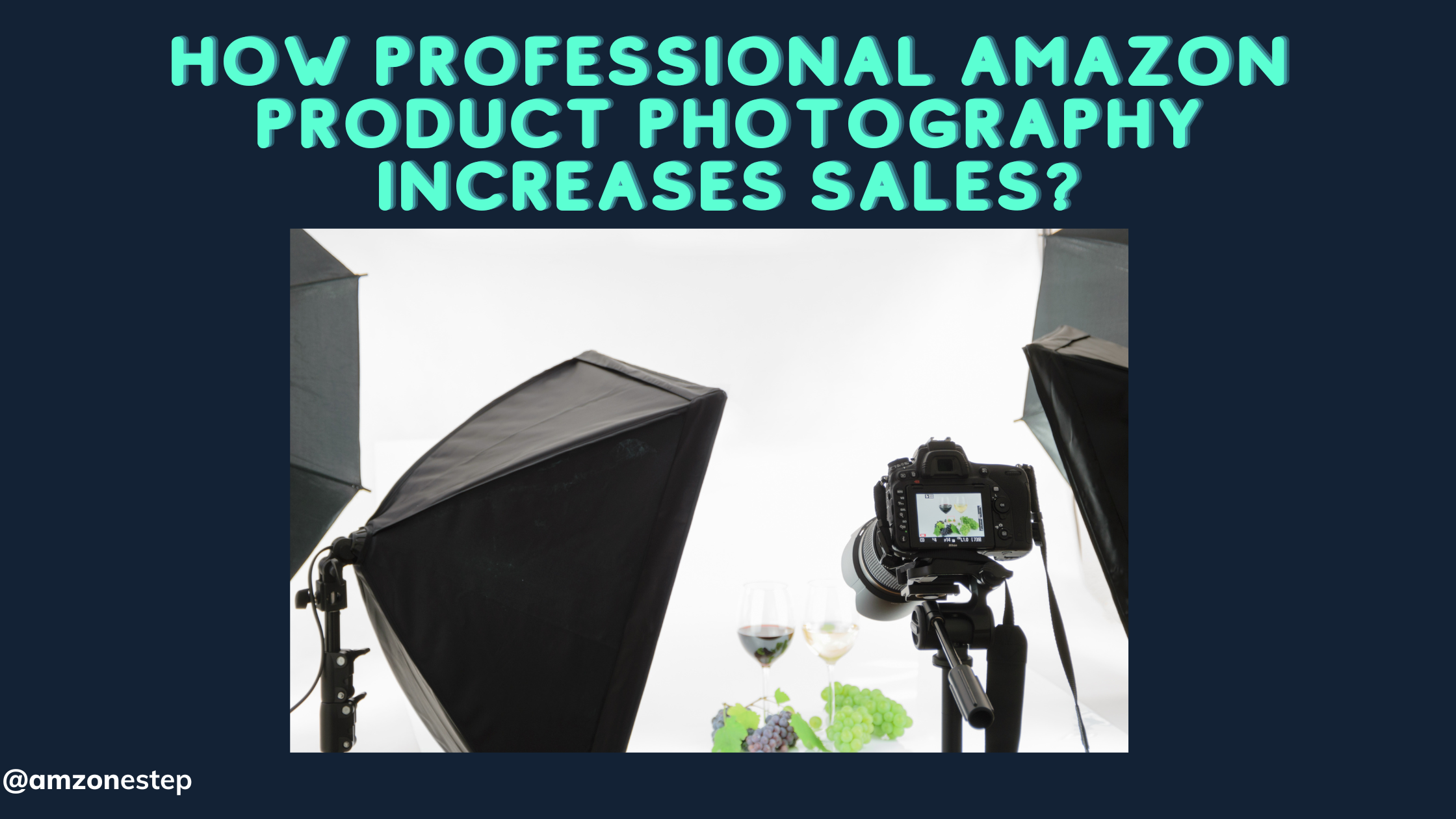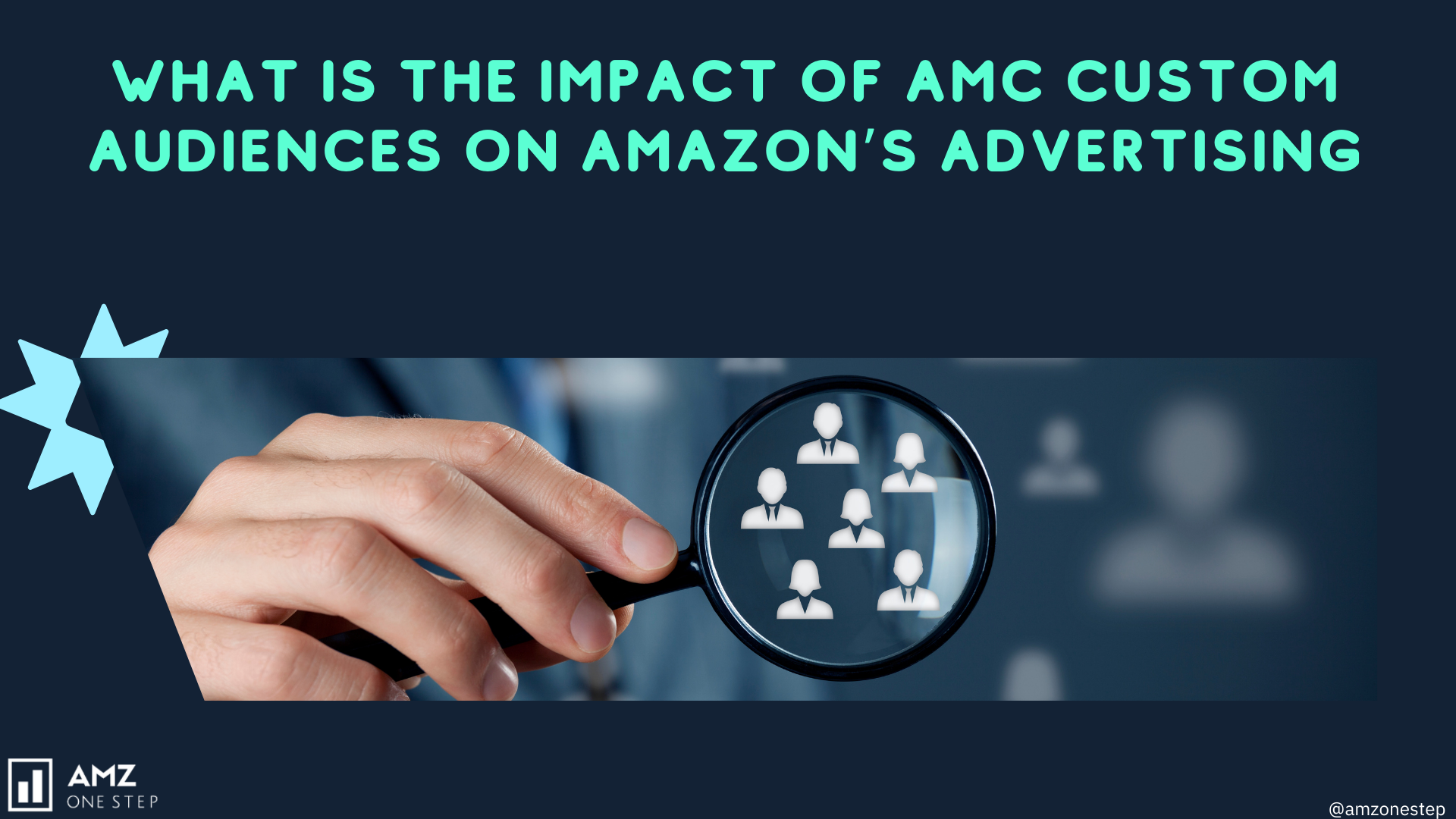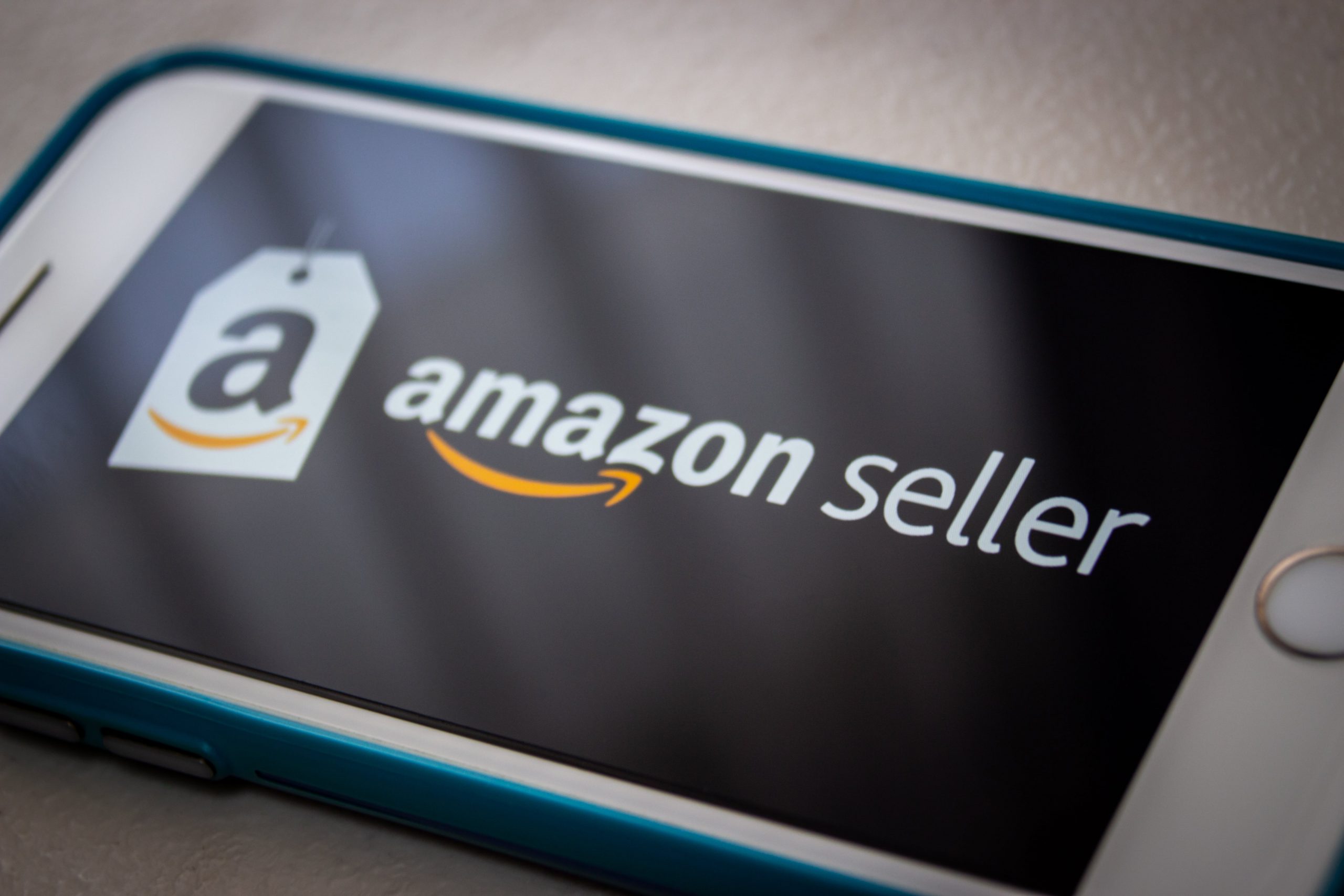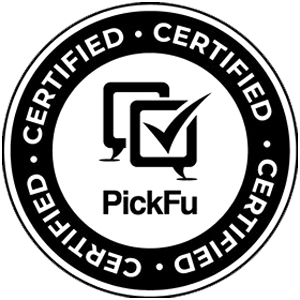While product specifications—such as dimensions, materials, and features—play a crucial role in informing buyers, they often lack the emotional pull necessary to truly engage potential customers. This is where your brand story comes into play.
A compelling brand story can turn casual browsers into loyal buyers by creating an emotional connection that transcends mere product details. Your brand story embodies your values, mission, and the journey that brought your products to life.
It’s what differentiates your offerings from the countless alternatives available at a click. By weaving your story into every aspect of your Amazon FBA presence, you not only highlight what makes your products unique but also foster trust and loyalty among your audience.
Join us as we explore why your Amazon FBA brand story matters more than just the numbers, and discover how to transform your story into a powerful tool for driving sales and building lasting relationships with your customers.
Read More: Why Amazon Video Product Ads Convert Better: The Power of Visual Storytelling
Table of Contents
Product Specs vs. Brand Story: What Buyers Really Care About
The Importance of Product Specifications
Product specifications refer to all the important information about a product. It is usually accompanied by size, material, weight, and functionality. The buyers bank on these specifics to determine whether such a product will suit their needs.
- For example, a person who wants a laptop will most probably prioritize specifications like processing power, RAM, storage capacity, and battery life. This kind of information presented with the utmost clarity and accuracy by a seller could go a long way toward winning the confidence of a buyer who feels that he is in a position to decide well.
However, spec-based alone contributes only to a buyer-product transactional relationship. This is most apparent in categories like electronics or appliances, where technical details are important.
But while product specs are a strong foundation upon which to understand the product, they rarely achieve the emotional resonance that truly dictates a buying decision.
The Role of Brand Storytelling
A brand story is the history or account of a product or a brand. It can tell the values or missions and also the special path that transformed into a brand. It is this kind of story that can produce an emotional connection to the target market so that the buyers can associate at the deepest level with the brand.
- For instance, a brand that emphasizes its sustainability and ethical sourcing in its brand story can attract environmentally conscious consumers who value these issues.
When a brand has a great story, it invites buyers to become part of that story.
- Take TOMS Shoes, for example. Its “One for One” initiative means that for every pair purchased, a pair is donated to someone in need. That’s a very powerful story that sets TOMS apart from competitors and aligns with the values of customers who wish to make a positive impact through their purchases.
Unlocking the Purchasing Behavior: Emotional Attachments
In several studies, emotional attachments form an integral part of consumer behaviors. The most simple buyers based on feelings rather than logic decide their purchases. Whenever they are able to associate with the emotionally charged brand story, they feel attached or loyal to that brand.
- In fact, Apple is quite a good storyteller. The central element of their marketing campaigns involves innovation, creativity, and a way of life that resonates with the target audience. This often results in an emotional pull to Apple products over competitors offering better specs at lower prices.
Brand Authenticity Matters
With authentic claims, authenticity is critical in the market today. Consumers are very discerning and can easily detect any false claim. It is a brand story that has genuine values and a true mission of talking to buyers.
- For example, Patagonia expresses its Amazon brand story as a celebration of the activist attitude towards environmental causes. Customers, in return, buy the product for its cause, and customer loyalty is higher.
When product specifications are supported by a real brand story, they take on new importance.
- For instance, a brand selling running shoes will talk about its technology and design but also the cause it supports by promoting running in local communities; that is how product specs take on a larger story that consumers can connect with and support.
Read More: The Mobile Conundrum: Optimizing Amazon Listings for Smartphone Shoppers
Differentiation in an Overcrowded Marketplace
When there are millions of products on Amazon FBA, it gets very competitive, and thus, differentiation is what one needs. Product specifications may not be the only factors that make a difference in crowded marketplaces. A captivating brand story can be the unique approach, targeting a buyer’s focus.
- For example, when a customer wants to find a skincare product, he or she can find several products with almost the same ingredients. But when a brand tells its story about where it came from, how it was inspired, and what benefits it has to customers, then the competition rises.
- Consider Drunk Elephant as an example, a skincare brand focusing on “clean-clinical” products but telling the personal story of its founder. By such communication, the customer emotionally connects with the brand and simultaneously knows what is different and what the benefit is in a product.
The Shift Toward Experience Over Specifications
A modern customer favors an experience over mere material possessions. A story by a brand based on customer experiences is more effective than a specification list itself.
- For example, if a kitchen equipment seller shares stories about families coming together to make memories with their product, the buyer finds an emotional value in cooking and family bonding. This relationship might make the prospective buyer more likely to buy the product than if they were only given technical specifications.
Building Trust with Storytelling
Trust is crucial in any online marketplace such as Amazon FBA. Buyers will generally not buy products that lack transparency or authenticity. A brand story about the journey of the brand, challenges faced along the way, and achievements can help build credibility.
- For instance, a small business can gain trust by announcing grassroots roots and including statements from actual customers. Buyers tend to buy when they feel they know the brand personally.
Visual Storytelling Role
Adding pictures to your brand story can give it a more lifelike impact. Good photographs and videos that narrate tell product specifications well, too. For example, lifestyle images show how one can use the product to tell a story, which would appeal to the buyer.
- It is pretty effective, especially when a buyer has many choices in Amazon FBA, for instance. A seller of outdoor gear could take listing images and videos that tell of adventures through their products; this would transform mere specifications into a story.
Testimonials and Social Proof
Through customer testimonials in your brand story, you can successfully integrate both product specifications and emotional connections. Real-life experiences from satisfied customers are what make the authenticity and credibility of the brand stick in the minds of the buyers.
- For instance, a fitness equipment-selling brand might include testimonials sharing how the product has transformed users’ lives. This integration of social proof and storytelling can really drive the purchasing decision.
Balance Between Specs and Story
A compelling brand story is important, but it must not completely outshine product specifications. Buyers still want to know the details that would affect performance and usability.
The best way of combining both is one that lets customers be well-informed about the important information they need while at the same time, making them feel emotionally attached to the brand.
- For example, a technology brand selling a new gadget may provide an entire specification along with an innovation story and the direction of the brand for the future. This is a combination of the rational and emotional mindset of the consumer in determining a purchase.
Branding and Long-Term Loyalty
Customer loyalty is not a one-time purchase; when a customer identifies the story of a brand, they will come back to it again. A good story, therefore, creates loyalty by inducing a sense of belonging and even community.
- Inspirational brands like Nike, which speak so much about inspiration and perseverance, generate an enormous return for these brands, paying a premium and yet yielding loyalty not because of product specs but the overall storyline of the brand that talks to people’s values and aspirations.
Brand Story in Alignment with Target Audience
Understanding who your target audience is forms the basis of building a brand story. A value- and desire-driven story may resonate better with your audience than any other because it speaks to the pain points, needs, or desires of your audience.
- For example, when your target market is a millennial who values sustainability, that can really be woven into a brand story and make some significant connections. Brands like All Birds have been able to leverage their brand story in conjunction with the audience’s values in such aspects as using eco-friendly materials and practices.
This impacts how visible your product will be on Amazon FBA as well. A well-crafted brand story can help improve rankings from related keywords.
Every time the customer searches for products according to their personal values, an effective brand story makes it easier to find your product. You improve the visibility of your product using related keywords yet remain emotionally connected with your potential buyer.
Crafting a Unique Brand Story for Amazon FBA Success
The Founder’s Journey: A Personal Touch
Telling the story of a founder is one of the most interesting ways to get in touch with audiences. It humanizes the brand, and customers connect with the person behind the product.
- For instance, a skincare brand begins with an experience where its founder had a problem concerning issues to the skin, then proceeds to try to create solutions to such problems that would be great for everyone. That’s not only authenticity but relates to a similar struggle.
In winning adversity, success sometimes manifests in the face of overcoming challenges. Stories of how some people have overcome adversities can inspire and motivate customers. A small business, which started when the economy was at its worst and eventually thrived, can attract consumers who like resilience.
- For instance, a food brand can tell its audience how it started from a small kitchen operation to becoming a thriving brand, all fueled by dedication and passion.
Sustainability commitment. Brand for purpose
It is a highly distinctive brand that prioritizes sustainability in today’s world. A firm narrates a compelling story by talking about its commitment to eco-friendly practices and ethical sourcing of materials.
- The clothes brand can talk about making clothes from recyclable material, thus offering fair labor practices appealing to an eco-conscious shopper who wants purchases to align with their values.
Innovations Customer Centric Driven
Brand Story Innovations are driven based on consumer needs: This will depict a message of improvement and responsiveness.
- For example, a technological gadget brand that focuses on how consumer suggestions have been used to advance its product will come up with a personal story of collaboration with its consumers. This will imply trust in the brand as well as the value given to every feedback from its audience.
Heritage Celebration: Restore Traditions and Cultures
Any brand that celebrates heritage or cultural roots can forge an emotional bond with the customer. A food brand sharing a recipe passed on through generations may appeal to those who seek authenticity.
- For instance, a spice brand may narrate how the founder’s grandmother taught the grandmother of secrets behind traditional cooking to attract authentic and traditional buyers.
Community Involvement: Giving Back to Society
Community involvement and social responsibility are the most powerful stories that a brand can tell. Beauty brands donate a portion of their profits to local charities or otherwise as the brand seems to engage in community development drawing customers to ethical consumption.
This commitment increases not only brand loyalty but also builds a respectable image in the marketplace.
Craftsmanship and Quality: The Artisan Approach
What may define a brand from another might be the emphasis on the craftsmanship and detail in coming up with the product. A jewelry brand, for example, can use the story of how each piece is carefully crafted to portray that quality and detail in it.
- Such appeal by a brand to the craftsmanship and detail with which products are created would appeal to artisanal good lovers and willing payers.
Power of Collaboration: Joining with Other Brands
Partnering with other brands can give brands a unique story that increases their visibility. Imagine a soft drink brand partnering with a local bakery to create some special flavor pairings.
This may attract people looking for unique taste combinations; the collaborative story brings excitement but also extends its audience to both parties involved.
Wellness Focus: Health, Well Being
In an increasingly health-conscious market, a brand that focuses on wellness becomes a beacon for a loyal following. A nutritional supplement brand that shows the stories of customers reaching their health goals because of its products creates a very inspiring story.
The wellness focus resonates with consumers and helps to position the brand as one trusted in and on their health journeys.
The Adventure Spirit: Embracing Exploration and Discovery
A brand that speaks to adventure and exploration inspires the imagination of its audience. The outdoor gear brand inspires its customers by showing them real adventures in which people use the products in harsh conditions.
This story inspires the customer to see himself in an exciting scenario, creating a strong bond with the brand.
Family Values: The Legacy Passed Down
Family values when attached to a brand story, are warm and inviting. The food brand would come in with recipes passed through generations of comfort and nostalgia for those looking for it.
In such a case, pasta boasts of its Italian roots by emphasizing the family tradition from which the products originated in their claims of authenticity and root-ness.
The Innovation Pioneer: Industry Leader
The innovative brands talk of being a pioneer. Tech brands present themselves from being startups to leaders in their industry by stressing groundbreaking products that take the market by storm and attract tech-savvy customers. The story gives the impression that the brand is innovative and plays the game of the future.
The Unsung Hero: Daily Champion
It creates a great emotional relationship with the brand by focusing on and making heroes out of everyday ones. Think of a brand manufacturing cleaning products that communicate the stories of essential employees who are utilizing their cleaning products to clean up their communities.
This kind of brand campaign can help develop the brand identity of a firm while increasing customer loyalty since many admire the values represented by this type of brand.
Cultural Stories: Cultural Diversity Inclusive
It celebrates cultural diversity and inclusivity, thus being more meaningful to a larger population. Fashion brands sharing the stories of models from diverse backgrounds or telling of cultural awareness would appeal more to those consumers seeking representations.
The story promotes the feeling of belongingness, which in turn helps strengthen a relationship with the brand.
Passion for Craft: The Story Behind the Product
Storytelling that refers to passion and dedication in making the product is very engaging. For example, a coffee brand tells the story from bean to cup, paying attention to the selection and roasting processes that can make a coffee lover buy the coffee.
That is because this story communicates quality and passion for the product. Most consumers appreciate fine products.
Change Adaptability: Keeping Pace with Consumers’ Needs
The ability to be flexible on changing consumer tastes is a beautiful story that brands can bring about. A fashion brand that is able to evolve from using non-toxic materials due to customer demands will attract consumers who care about the environment. The story here explains how the brand evolves and stays responsive to the needs of consumers.
The Local Connection: Support Small Businesses
A brand story that emphasizes local roots and small business support can speak to consumers who care about making a positive difference.
- For example, if a skincare brand sources its ingredients from regional farmers, then customers might find appeal in community support. This story not only strengthens brand loyalty but also creates a positive image for your brand in the marketplace.
The Science of Innovation: Relied Upon by Research
Brands that tell how evidence-based their products are tend to attract customers who perceive them as evidence-based products to consumers. A skincare firm could have a strong story demonstrating to the consumers how all those formulations are based upon different studies from dermatology.
Science builds the strength of credibility and puts the brand in authority that is trusted by that respective industry.
The Origin Story of How an Offer Went from Concept to Distribution
Something that is shared from design to market entry makes for an interesting story. A gadget brand might show its new innovative product during the designing and testing stage, attracting customers by their love for technology. Such a back-story tells a lot about transparency and builds excitement in a future buyer.
A vision of the Future: Communicating long-term goals
Consumers might be motivated by a brand story talking of a future vision. A renewable energy brand could easily attract green-conscious customers who care about their future by sharing their commitment to a sustainable future.
It will position the brand as an industry leader to appeal to those who wish to be part of something positive while strictly following the current trend.
Creating an Emotional Hook in Your Brand Story
Share Real Experiences
Authenticity is critical when you want to develop an emotional hook in your brand story. The consumer today is wise and can easily catch a sense of insincerity or marketing gimmickry.
Real experiences are the only things that could make your audience connect to you better, whether it’s the journey of the founder, testimonials from the customers, or behind-the-scenes stories.
- Take Coca-Cola’s “Share a Coke” campaign. The brand replaced its iconic logo with popular names. It personalized the brand and created a sense of community, leading to increased sales and brand engagement, by encouraging consumers to find bottles with their names and share the experience with friends and family.
Nostalgia
Nostalgia is one of the most powerful emotional triggers that can be applied effectively in brand storytelling. Those brands that evoke some fond memories are directly connected on an emotional level with their audience.
- For example, in the case of LEGO, it has capitalized on the nostalgia factor by marketing its old sets in a nearly new product. Nudging parents to relive their childhood LEGO memories, the brand creates a nostalgia, which inspires purchases both for themselves and for their children. This emotive hook pushes sales but also leads to a deeper connection with the brand since it makes LEGO appear as that source of creativity and joy centuries ago.
Use of Humor and Lightheartedness
Humor can serve effectively to build an emotive hook. When a brand makes consumers laugh, it not only grabs attention but also develops a positive association. The first brand I have learned is Old Spice, as this brand used humor during its product advertising.
- For instance, one of the memorable “The Man Your Man Could Smell Like” makes buying a deodorant very interesting. Humor through its brand story has positioned Old Spice away from many brands to create a relationship, though emotional with the client that enjoys a lighthearted advertisement.
Pain Points
A good emotional hook also refers to the pain points of your target audience. Brands can create a dramatic story by showing that they understand their audience
- For instance, Dove’s “Real Beauty” campaign challenged standard beauty-oriented thinking and insecurity in many women regarding their appearance. By showing real women, with different shapes, sizes, and backgrounds, Dove was able to create a familiar storyline while also encouraging people to hold their heads high.
The emotional connection with customers was higher when purchasing Dove because they knew they were assisting a brand that was distinct from others, for it was about authenticity and self-acceptance.
Emotional Hook: Building Community Around Your Brand
Emotional hook can also refer to building a sense of community around your brand. The more the customer belongs to you, the more engaged he is with your brand. Harley-Davidson created a sense of belonging for their customers.
By focusing the brand on the lifestyle and camaraderie attached to the product, the brand develops an emotional involvement over and above the sale of the product.
This sense of belonging promotes loyalty and will have customers that are more likely to act as advocates for the brand, thereby organically generating growth through word-of-mouth.
The final strong emotional hook comes from the expression of the values that your brand believes in. Today’s consumer increasingly wants to support a cause by purchasing a product with a brand that believes in those causes.
- Patagonia has made environmental responsibility and sustainability its core belief for building its brand. A promise by Patagonia toward earth preservation and an appeal to consumers to consume less leads to a story that clicks for the conscious consumerism for environment care.
A shared sense of values strengthens an emotive bond and converts consumer groups into supporters of that particular brand.
How to Use Data to Enhance Your Brand Story
Customer feedback is a treasure trove of information that can improve your brand story. Sellers can view product reviews, ratings, and questions from Amazon FBA customers. Careful analysis will enable you to determine common themes and sentiments that arise from your customers’ experiences.
For instance, if many customers compliment the durability of your products, you can integrate this as the key component of your brand story.
- TrailBlazers is a firm that manufactures hiking equipment. By reading commentaries from customers, they noted that the customers are always concerned about the durability of their equipment during extreme conditions. Instead of talking about technical specifications, the brand turns its story on how their equipment withstands the test of time in all types of conditions. This makes their target buyers listen to and believe them as they also project them as a brand built on trust and quality.
A/B Test Your Brand Story Elements
Another data-driven way of helping you amplify your brand story is A/B testing. This can help test different versions of your brand messaging, listing images, and visuals to gather more valuable data on what resonates best with your audience.
- For example, if you were thinking about the emotional aspect of your brand versus the practical benefits of your products, you can create two totally different Amazon FBA listings-one that would focus on emotional storytelling, and another that would focus on product features.
If you imagine running a HappyPaws, your brand in pet supplies, and the decision to A/B test on two versions of a product listing for that premium dog bed. Either it is comfort and quality through materials or it tells the story of how the bed helps dogs sleep better and live happier lives.
You will be able to tell which one suits the buyers the most and, based on the performance metrics, which include conversion rates and customer engagement, modify your overall brand story.
Engaging Market Trends into Brand Story
To properly have a brand story, for example, you’ll want to stay updated on the market as well as the needs of consumers. You will view reports that industries or social media and competitor strategies will eventually bring you to noticing emerging themes which fit your brand identity.
If you’re one who discovers more consumers to take towards wellness and self-care, you would take the cue and jump on the trend.
- Take an example of a skincare brand, GlowEssence, focused on natural products. Analyzing its market data, it found that there was a rising trend among consumers for clean and organic skincare. GlowEssence renews its brand story with a clear message that it only uses natural ingredients and seeks to serve everyone to achieve healthy skin without the usage of toxins.
Such an approach is driven more by data and not only will appeal to a larger audience but also establish GlowEssence as a natural skincare movement leader.
Tailoring Content to Different Customer Segments
Data analysis will help you segment your audience properly. You can tailor your brand story to fit different customer groups by identifying the different segments within your customer base: first-time buyers, repeat customers, or premium buyers.
- For instance, CozyNest, an imaginary brand of home products, would examine the sales report and deduce that one group of customers frequently bought luxury bedding sets, while another group had a preference for budget-friendly sets. On such findings, CozyNest can create different brand stories for each segment.
The story may then focus on the high-end, excellent quality, and exclusivity of the products for a high-end consumer, while for the budget consumer, it should talk about value and affordability without compromising on quality. Such a targeted approach helps improve engagement while increasing conversion.
Perfecting your story by using social media metrics is taken advantage of as follows:
- Social media is a treasure trove of data that can inform your brand story. When it comes to the engagement of users regarding different elements in your storytelling, you should analyze metrics such as likes, shares, and comments.
Therefore, if some piece of information related to your community involvement is getting immense attention, this may suggest that your consumers are interested in that aspect of your brand.
- A brand called FitLife is an imaginary mythical fitness apparel that posts workout tips and community success stories on social media frequently. Through analytical tools for engagement metrics, they determine that customer transformation stories garner the most activity.
Having understood this, FitLife comes to a conclusion to add more customer success stories in their brand story in the way FitLife products empower the user to achieve their fitness goals. This has not only supported their brand equity but also seen to be very empathetic to their customers.
Measuring the Effect of Your Brand Story on Sales
In the end, your brand story can also be measurably effective. Using tools such as Amazon FBA’s performance analytics, the sale data conversion rates, and other customer retention metrics can be tracked before and after the changes to the story. Comparing metrics will indicate whether changes to the story influence sales and loyalty.
- For example, a new fashion brand, TrendSetters, develops a new story that conveys its commitment to sustainable fashion. It measures the sales and comments later on. Finally, it witnesses a very steep surge in sales along with hundreds of excellent comments, which simply validates that what it claims has a bearing in the minds of environmentally aware customers.
The statistics make it bold enough to concentrate on investment in such a message and subsequently develop the story.
How to Use Influencer Partnerships to Share Your Brand Story
Identify the right influencers for your brand
The first step in disseminating your brand story is choosing the right influencer who will be with you for the spread of your brand message. You, therefore, need to identify who shares your brand values and aesthetics.
This helps make your story authentic for the people as it portrays what they believe in; the case is the same for the skin care brand that will join a beauty influencer if it is inclined towards more natural products with ethical practice. Find the influencers with the passion to believe in the purpose and mission of your brand so that you may heighten your chance of getting the proper messaging across about your story.
Building a Cooperative Storytelling
Once you’ve zeroed in on an appropriate influencer, then collaborating in storytelling comes into place, which essentially includes making collaborative content wherein the message for your brand story becomes enfolded within the distinctive voice and style of your chosen influencer.
- For instance, if you are selling handmade jewelry, you can collaborate with a fashion influencer who will show how your pieces complement different outfits. The influencer can share the personal story of discovering your brand and the story behind the craftsmanship of each piece. This collaboration brings your brand to life while adding depth to the story, which makes it more engaging for the audience.
Effective Use of Social Media Platforms
Many social media platforms influence, and each provides unique means through which to share the story of a brand. Instagram gives, for example, the scope of visually aesthetic storytelling through listing images and reels.
An influencer may share a string of photos focusing on the products he has, and the caption of each image is going to reflect the brand values and mission. Through TikTok, users can connect to short, creative videos in which you can present your story with entertaining and informative content.
- For instance, a food influencer could produce a recipe video using your kitchen gadgets, telling the story of how your products make their cooking experience so much fun.
Authentic Content: The Authenticity Factor
When using the tool of influencer marketing partnerships to share your brand story, authenticity is key. Audiences can quickly recognize insincerity, so be sure to give influencers the freedom to present your brand in a way that feels authentic to them.
- For example, if your brand embodies sustainable practices, partnering with a more environmentally conscious influencer that tends to reflect your brand values will create a much more authentic story.
This means the influencer may speak to their personal commitment to sustainability and how your products fit into that life, all while effectively reinforcing your brand story without sounding overly scripted or forced.
Interaction with Influencer Content and Building Community
After influencers publish content featuring your brand story, engage with their post. Responding to their comments, sharing their post on your own social channels, and saying thank you for the support all will go a long way to foster community.
- For example, if the influencer shares a story of a heart-wrenching usage experience with your product, comment on it with a word of appreciation, thus showing appreciation for the influencer as well as building rapport among his or her audience. This type of engagement might make people curious about the brand and its story behind it and eventually may even convert to sales.
Quantifying Influencer Collaboration Outcomes
Measuring effectiveness will require tracking key performance indicators. Some of the possible metrics to track include the rate of engagement, traffic being referred to your Amazon FBA listing, and sales conversion rates.
- An example would be in a scenario where an influencer uses a promotional code among his audience, helping you understand how many sales that resulted from that code, thereby measuring the success of your influencer partnership. It helps in giving you a refining influencer strategy over time and proper optimization of future campaigns by analyzing the metrics.
Case Study: Success Story of a Fitness Apparel Brand
A good example of telling a brand story using influencer partnerships was the success story of a fitness apparel brand with fitness influencers on social media. This brand had an interesting story centered around empowering each individual to embrace his/her fitness journey.
The brand engaged with influencers who shared their personal transformations in fitness. Every influencer created content showcasing the apparels while narrating the specifics of his/her journey of persistence and dedication.
The authentic representation of the brand story resonated with followers and led to increases in brand awareness and sales.
How to Use Storytelling in Email Marketing Campaigns
Designing an Engaging Email Template
Now that you have a brand story, you have to create an engaging email template that will support your story. Your visuals of your email should be connected to your story.
- For example, if your brand story is about handcrafted products, then you would use earthy tones and listing images of artisans in action. A lifestyle email that demonstrates the use of your products in everyday life will help fortify your brand story. You can make an attractive email that captures the essence of your brand identity, which makes it easier to tell an effective story.
Using Subject Lines to Pique Interest
Subject lines are key in email marketing. They define whether the recipient will open your email or not. Write subject lines that can evoke curiosity or emotion, related to your story.
- For example, if your brand is all about overcoming struggles to make quality products, a subject line like “Our Journey from Struggle to Success: Discover Our Story” evokes a lot of interest among the people. This strategy not only invites opens but also structures the context of your email so that it ties into your brand story.
Story-telling in a Segmented Manner
Email marketing cannot work without proper segmentation. Proper segmentation means sending messages that are addressed specifically to your target groups of audience.
- For example, if you have various customer personas, such as eco-conscious buyers or luxury product enthusiasts, make your brand story adapt to these. For the eco-conscious, it is your commitment to sustainability and ethical practices.
In contrast luxury buyers, focus on the craftsmanship and exclusivity of the products. Personalized storytelling increases relevance and engagement and will convert more.
Telling Stories in Product Launch Emails
Launch new products by associating elements of your brand story to build excitement and anticipation. You could launch a new skincare line because you have been inspired by personal experiences that you may have had dealing with some skin issues.
This will not only inform them of your product but also build more of an emotional relationship with your brand.
Using Customer Stories to Raise Your Story
Through email marketing, customer testimonials and stories can elevate your brand story very significantly. Authenticity is added to your story through the actual experiences of satisfied customers.
- For example, if it is home decor, try using a customer story that transformed their living place with the help of your products. Try sharing before and after listing images of the customer and testimonials of how your brand contributed positively to their life.
It not only builds up credulity but adds strength to the argument above that your brand stands for something more than just the product-those things which can enrich one’s life.
Read More: Lessons Learned After Creating 25,000 Amazon Listing Images
Develop a Storyline Series of Emails
Consider developing a storyline series of emails that are gradually revealed to your brand. This serialized approach keeps the reader interested over time and gives them something to look forward to in your emails.
- For instance, you can present a five-chapter set of emails, and each time, you focus on different chapters concerning your brand story-from start with the first challenges towards customer success stories and, finally, future hopes. All this will create a scenario where you explain your story in detail yet still, connect with the audience as well.
Conclusion
While product specifications give you the basic information, it is the story of your brand that is appealing to consumers and will bring them back for more. A good story will appeal to the emotions of the customer and turn a casual browser into a devoted buyer.
Your journey, values, and mission shared with your audience not only make your products different but also give them a sense of belonging and trust in you.
In the end, it’s your brand story that will transform an otherwise straightforward buy into a rich experience, making customers return to your brand again and again over the competition. Tap into the power of storytelling, and watch sales increase and brand loyalty deepen.
Transform Browsers into Buyers With AMZ One Step

Hi there! I’m the content marketing and branding specialist for AMZ One Step. I work hard to create engaging and informative content that helps our readers learn more about Amazon selling and how to make the most of their businesses. I love spending time with my family and exploring literary works when I’m not writing or working on projects.


